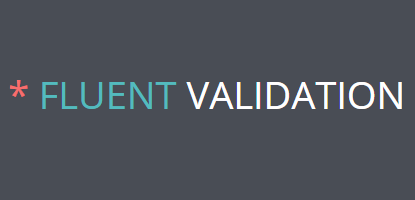In this blog post I will explain how to apply the same validation rules on the same properties in different classes with FluentValidation. This post will continue on the previous one where I explained how to create Custom Validators for your properties.
So in the previous example we had the Person class with a PersonValidator class. Let’s say you have some pages in your application to create and edit instances of that Person class. In order to create those pages, we use separate ViewModels for those pages. So let’s say you have a PersonCreateViewModel and a PersonEditViewModel. In this way, you have 3 classes with the same validation rules, because in example the property FirstName is the same in all those classes. If the validation rules of the FirstName changes (in example the MaxLength changes) you have to change the rules on 3 different places. If you forget to change it on one place a new bug is introduced.
Reuse validators for property
In order to reuse the validators we are going to extend the static CustomValidators class from our previous post. Again we are creating an extension method but now for the FirstName property. We put all the validation rules that we have for this FirstName in this custom validator. The end result will than be the following:
public static IRuleBuilderOptions<T, string> FirstNameValidation<T>(this IRuleBuilder<T, string> rule)
{
return rule
.NotEmpty()
.NotNull()
.MaximumLength(30)
.NotStartWithWhiteSpace()
.NotEndWithWhiteSpace();
}
We can now change the PersonValidator (and PersonCreateViewModel and PersonEditViewModel) to use the power of the new FirstNameValidation extension method. The end result will than be the following:
public class PersonValidator : AbstractValidator<Person>
{
public PersonValidator()
{
RuleFor(e => e.FirstName).FirstNameValidation();
RuleFor(e => e.LastName).LastNameValidation();
}
}
The PersonValidator class is now smaller and easier to read. The cool thing as well is that you can combine your custom FirstNameValidation extension method with your other extension methods as well. So when you have in example slightly different validation rules for your create and edit viewmodels you can use in example the FirstNameValidation method for the generic rules and add the specific rules in the particular validator class. See the following example where the edit viewmodel has extra validation rules:
public class PersonCreateViewModelValidator : AbstractValidator<PersonCreateViewModel>
{
public PersonValidator()
{
RuleFor(e => e.FirstName).FirstNameValidation();
RuleFor(e => e.LastName).LastNameValidation();
}
}
public class PersonEditViewModelValidator : AbstractValidator<PersonEditViewModel>
{
public PersonValidator()
{
RuleFor(e => e.FirstName).FirstNameValidation().NotContainWhiteSpace();
RuleFor(e => e.LastName).LastNameValidation();
}
}
Conclusion
Reusing validators saves you a lot of time and duplicate code. This will eventually result in less bugs. Nice is as well that your validator classes like the PersonValidator class is easier to read because it isn’t that long.
